Special Hobby 1/72 Martin Baltimore Mk.III/IV/V By Stephen Tontoni | 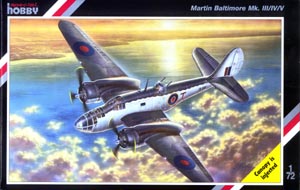 |
History
The Martin Baltimore was ordered in 1940 to replace the Martin Maryland in light bomber service. Those Baltimores that were intended for the French were re-routed to be used by the British after the German invasion. These aircraft started to come on line in 1942. The Kit 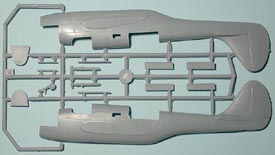 Special Hobby has released a fine example of early, middle and late Baltimores; marking schemes and modifications are provided in the kit to do either: 1942 Baltimore III (USA test aircraft, British markings), 1943 Baltimore IV (RAF Coastal Command in Greece) or a 1944 Baltimore IV (Italian). The alernate parts included to make the necessary modifications for various marks are in the dorsal turret area. Special Hobby has released a fine example of early, middle and late Baltimores; marking schemes and modifications are provided in the kit to do either: 1942 Baltimore III (USA test aircraft, British markings), 1943 Baltimore IV (RAF Coastal Command in Greece) or a 1944 Baltimore IV (Italian). The alernate parts included to make the necessary modifications for various marks are in the dorsal turret area. The molding is excellent; Special Hobby has come a long way. The kit is mostly molded in a dark gray styrene that is easy to cut and work with, but is not too soft. 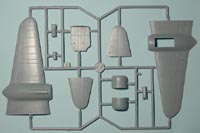 All the molding looks crisp with no readily discernible flash, sink marks, or ejector pin holes. There are some fairly substantial lugs within the wing halves, but they are easily snipped off and will be deep within the wing when the model is built. All the panel lines are recessed consistently. There are no locating pins either on the wings or on the fuselage halves. Also, because the wing will have a butt joint against the fuselage without any tabs entering the fuselage, I would recommend strengthening that area to make a solid joint. The wheel wheels feature inserts so there isn't just a gaping hole in the engine nacelles that needs to be addressed. I'm sure that some super detailers out there would want to dress it them up a bit more, but what is there is adequate. All the molding looks crisp with no readily discernible flash, sink marks, or ejector pin holes. There are some fairly substantial lugs within the wing halves, but they are easily snipped off and will be deep within the wing when the model is built. All the panel lines are recessed consistently. There are no locating pins either on the wings or on the fuselage halves. Also, because the wing will have a butt joint against the fuselage without any tabs entering the fuselage, I would recommend strengthening that area to make a solid joint. The wheel wheels feature inserts so there isn't just a gaping hole in the engine nacelles that needs to be addressed. I'm sure that some super detailers out there would want to dress it them up a bit more, but what is there is adequate. Interior detail appears adequate for a1/72nd scale kit; again this is an area that can be improved upon. I seriously doubt that we'll see any resin aftermarket sets for this aircraft, but a little photo etch would busy up the cockpit nicely. 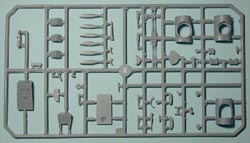 All of the clear parts are injection molded and seem thin enough. Nose glazing comes in two pieces: the nose and the area over the bombardier's head. This doesn't pose any huge obstacles, but the modeller should take extra care to make a smooth joint between the two clear pieces. There won't be a lot of opportunity to go back and fix that if it is misaligned or otherwise goobered up. All of the clear parts are injection molded and seem thin enough. Nose glazing comes in two pieces: the nose and the area over the bombardier's head. This doesn't pose any huge obstacles, but the modeller should take extra care to make a smooth joint between the two clear pieces. There won't be a lot of opportunity to go back and fix that if it is misaligned or otherwise goobered up.
This kit has some resin in it that is very nicely done. The resin includes: engines, wheels, antennae, propellor hubs, and landing gear door tabs. All of the resin molding is very clean. 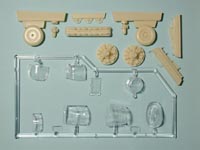 The decals look excellent and perfectly in register. They are very thin and I'd expect them to respond well to most solvents. The marking options are listed above. The decals look excellent and perfectly in register. They are very thin and I'd expect them to respond well to most solvents. The marking options are listed above. Conclusion All in all, this looks great in the box. I'm looking forward to building the RAF Coast Command variant; I think it has the most asthetically pleasing color scheme of those offered. | 








|
